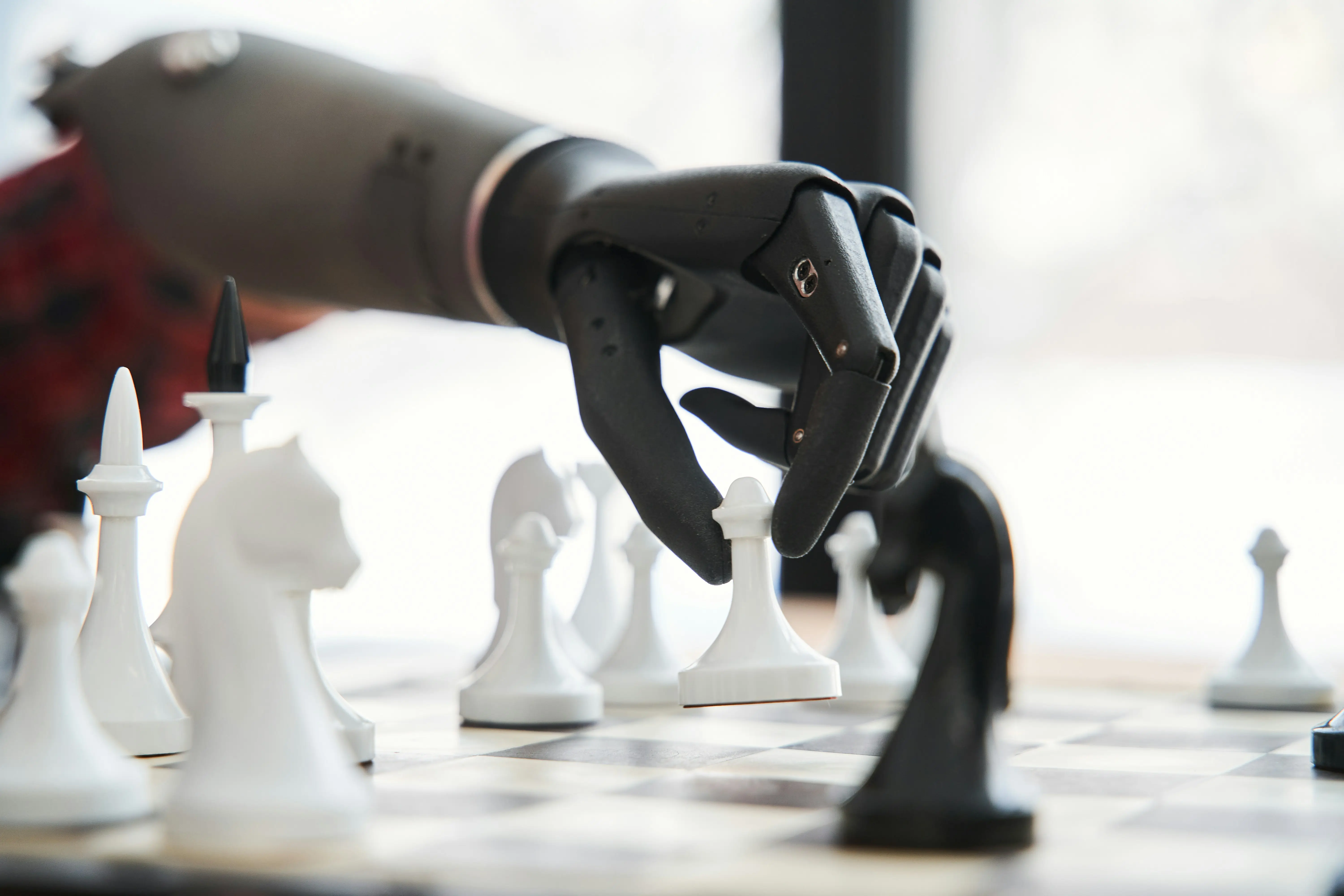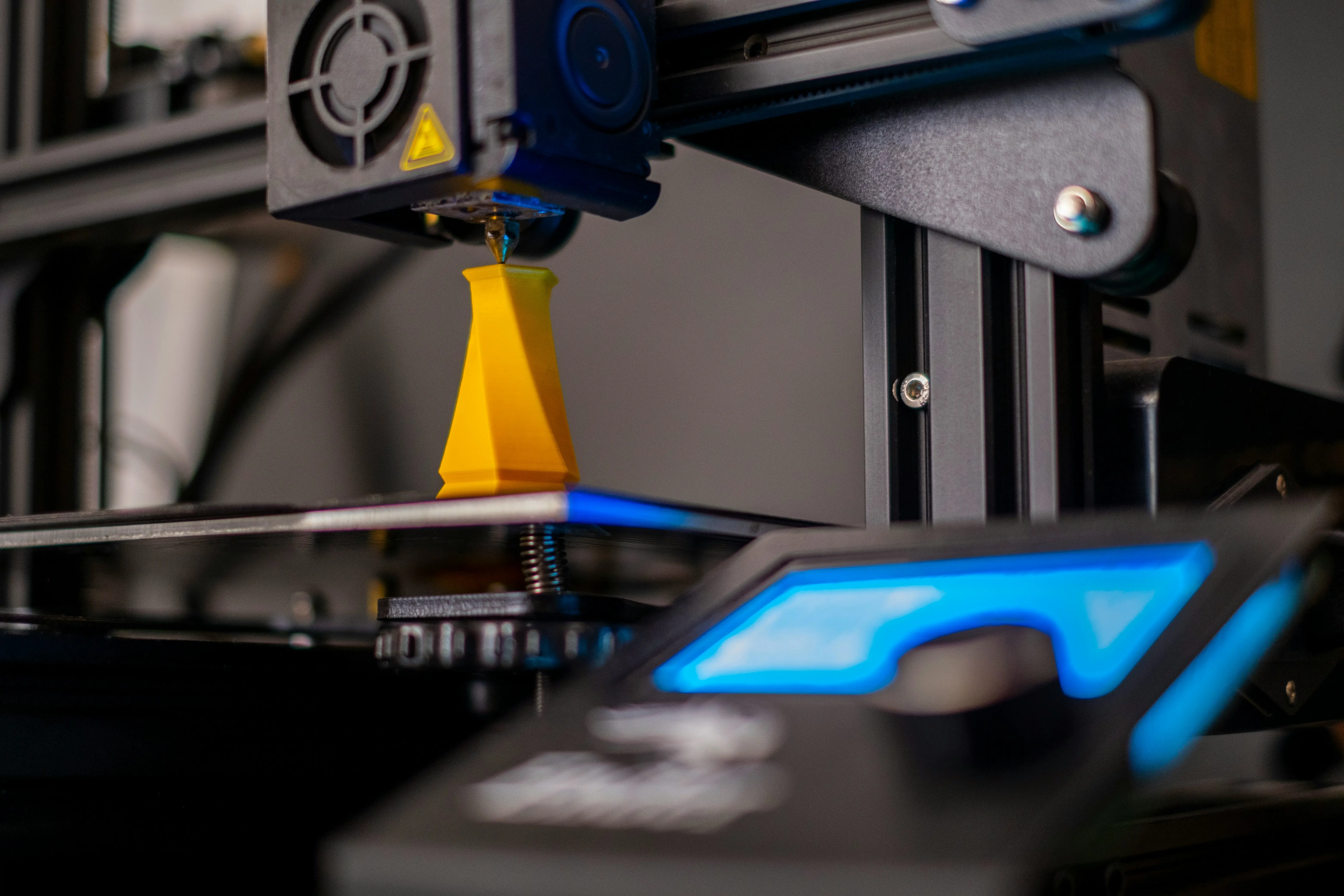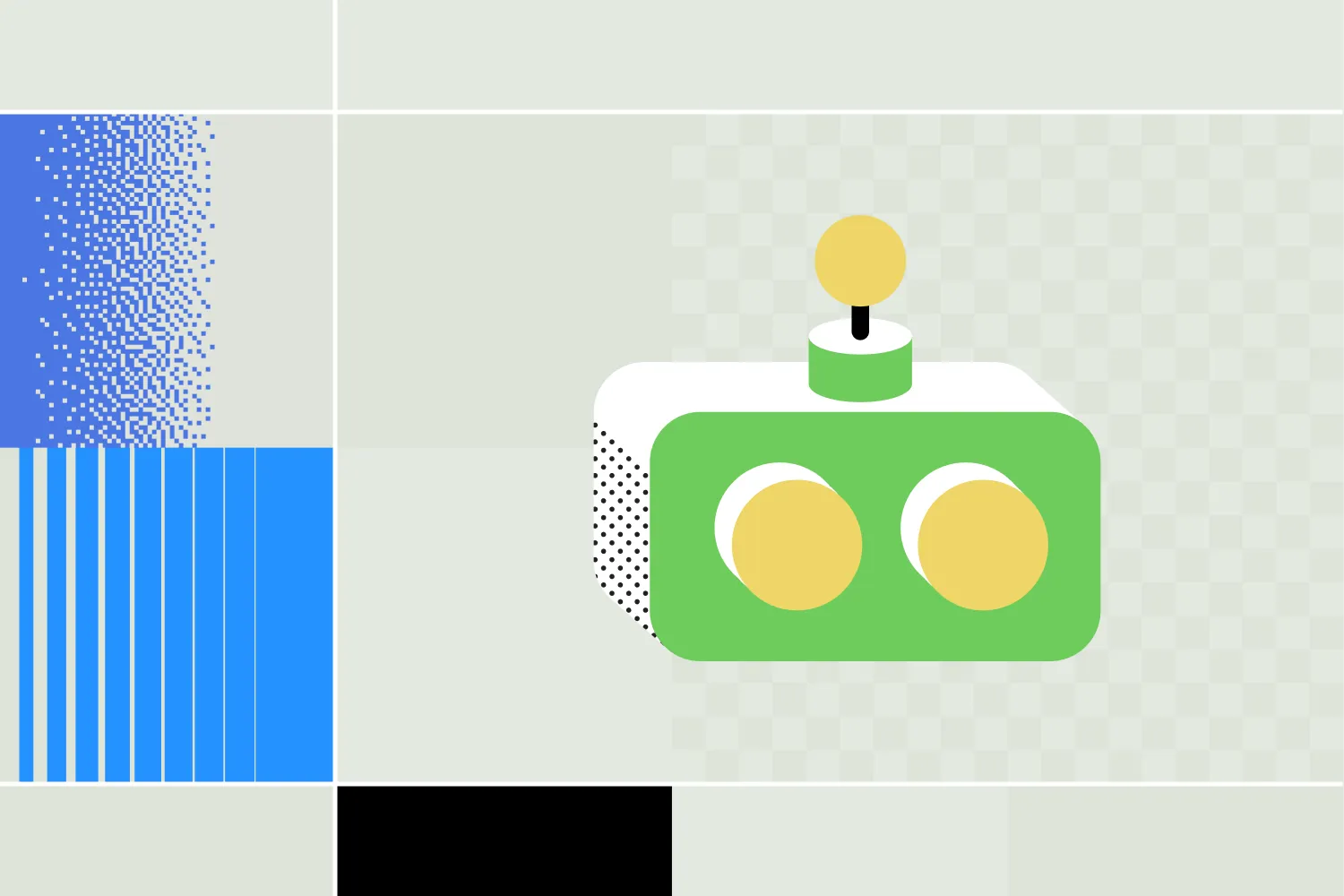- ตัวแทน AI มีตั้งแต่ระบบสะท้อนกลับแบบง่ายๆ ที่ตอบสนองต่ออินพุตปัจจุบัน ไปจนถึงตัวแทนที่ซับซ้อนซึ่งวางแผน เรียนรู้ และประสานงานงานที่ซับซ้อนในโดเมนต่างๆ
- ตัวแทนสะท้อนกลับแบบง่ายจะออกฤทธิ์เฉพาะตามเงื่อนไขเฉพาะหน้า ในขณะที่ตัวแทนสะท้อนกลับตามแบบจำลองจะช่วยเพิ่มการตัดสินใจโดยใช้แบบจำลองภายในเพื่อติดตามและคาดการณ์การเปลี่ยนแปลงของสิ่งแวดล้อม
- ระบบหลายตัวแทนมีตัวแทน AI หลายตัวทำงานร่วมกันหรือแข่งขันกัน ทำให้สามารถใช้งานแอปพลิเคชันขั้นสูงได้ เช่น รถยนต์ขับเคลื่อนอัตโนมัติที่ประสานงานกันในการจราจรหรือจัดการห่วงโซ่อุปทานที่ซับซ้อน
ตัวแทน AI ได้ระเบิดในช่วงไม่กี่ปีที่ผ่านมา และด้วยเทคโนโลยีและความสามารถที่ซับซ้อน จึงมีตัวแทน AI หลายประเภทในทุกวันนี้
เอเจนต์ AI คือซอฟต์แวร์ที่ทํางาน ไม่เหมือนกับแชทบอทมาตรฐาน ที่สามารถดําเนินการในนามของผู้ใช้ได้
มีเอเจนต์ AI มากมายหลากหลาย ตั้งแต่เทอร์โมมิเตอร์อัจฉริยะ รถยนต์ขับเคลื่อนอัตโนมัติ ไปจนถึงเอเจนต์ที่มีอินเทอร์เฟซแชท กรณีการใช้งานทั้งหมดเหล่านี้จัดอยู่ในหนึ่งในเจ็ดประเภทหลักของเอเจนต์ AI ในบทความนี้ ผมจะแบ่งปันเอเจนต์ AI หลัก 7 ประเภท และ ตัวอย่างเอเจนต์ AI ที่ใช้งานจริง
1. ตัวแทนสะท้อนอย่างง่าย
ตัวแทนรีเฟล็กซ์แบบง่ายคือระบบ AI ที่ตัดสินใจโดยอาศัยข้อมูลอินพุตปัจจุบันจากสภาพแวดล้อมเท่านั้น
ใช้ชุด กฎเงื่อนไข-การกระทำ เพื่อจับคู่อินพุตที่สังเกตได้กับการตอบสนองเฉพาะ เมื่อ ตรวจพบสถานะใดสถานะหนึ่ง ในสภาพแวดล้อม ระบบจะดำเนินการตามกฎที่เกี่ยวข้อง
มันไม่มีหน่วยความจำหรือแบบจำลองภายในของโลก ดังนั้นจึงสามารถทำงานได้อย่างมีประสิทธิผลในสภาพแวดล้อมที่สังเกตได้อย่างสมบูรณ์เท่านั้น โดยที่การตัดสินใจทุกอย่างสามารถทำได้โดยอาศัยข้อมูลอินพุตปัจจุบันเท่านั้น
ตัวอย่างของตัวแทนรีเฟล็กซ์แบบง่าย
- เทอร์โมสตัทที่เปิดความร้อนเมื่ออากาศเย็นเกินไป
- หุ่นยนต์ที่หมุนตัวเมื่อชนกำแพง (สวัสดีครับ รูมบ้าที่มีแมวอยู่ด้านบน)
- แชทบอท พื้นฐานที่ตอบกลับว่า "สวัสดี!" เมื่อผู้ใช้พูดว่า "สวัสดี"
.webp)
2. ตัวแทนสะท้อนตามแบบจําลอง
ตัวแทนสะท้อนกลับตามแบบจำลองคือตัวแทน AI ที่ตัดสินใจโดยอาศัยทั้งอินพุตปัจจุบันและแบบจำลองภายในของโลก
ต่างจากตัวแทนสะท้อนกลับแบบธรรมดา ประเภทนี้ ติดตามสถานะของสภาพแวดล้อมในช่วงเวลาหนึ่ง โดยใช้แบบจำลอง ซึ่งโดยพื้นฐานแล้วคือข้อมูลที่เก็บไว้เกี่ยวกับการทำงานของโลก เพื่อเติมเต็มช่องว่างเมื่อสภาพแวดล้อมนั้นไม่สามารถสังเกตได้ทั้งหมด
เมื่อได้รับอินพุตใหม่ ระบบจะอัปเดตสถานะภายใน ปรึกษาเงื่อนไขกฎการดำเนินการ และเลือกการตอบสนองที่ดีที่สุดโดยอิงจากทั้งการรับรู้ในปัจจุบันและสิ่งที่รู้จากการโต้ตอบก่อนหน้า
ตัวอย่างของตัวแทนรีเฟล็กซ์ตามแบบจำลอง
- หุ่นยนต์ดูดฝุ่นที่จดจำเค้าโครงของห้องและหลีกเลี่ยงบริเวณที่ทำความสะอาดไปแล้ว
- ตัวแทน LLM ที่ดำเนินการสนทนาต่อในขณะที่ติดตามอินพุตของผู้ใช้ในอดีต
- AI ของเกมที่ตอบสนองไม่เพียงแต่กับสิ่งที่เห็นเท่านั้น แต่ยังรวมถึงสิ่งที่รู้จากก่อนหน้านี้ในการแข่งขันอีกด้วย

3. ตัวแทนการเรียนรู้
ตัวแทนการเรียนรู้คือตัวแทน AI ที่ปรับปรุงประสิทธิภาพการทำงานตามเวลาโดยการเรียนรู้จากประสบการณ์
มี องค์ประกอบหลักสี่ประการ ได้แก่ องค์ประกอบการเรียนรู้ องค์ประกอบการปฏิบัติงาน นักวิจารณ์ และเครื่องสร้างปัญหา
องค์ประกอบประสิทธิภาพจะเลือกการกระทำ ในขณะที่องค์ประกอบการเรียนรู้จะปรับพฤติกรรมตามข้อเสนอแนะ นักวิจารณ์จะประเมินผลลัพธ์ของการกระทำโดยใช้มาตรฐานที่กำหนดไว้ล่วงหน้า และตัวสร้างปัญหาจะแนะนำการกระทำใหม่เพื่อลองเพื่อการเรียนรู้ที่ดีขึ้น
โครงสร้างนี้ช่วยให้ตัวแทนสามารถ ปรับตัวให้เข้ากับการเปลี่ยนแปลง ปรับปรุงกลยุทธ์ และดำเนินการได้อย่างมีประสิทธิภาพ แม้ในสภาพแวดล้อมที่ไม่คุ้นเคย
ตัวอย่างของตัวแทนการเรียนรู้
- ตัวแทน AI เข้ารหัส ที่ปรับกลยุทธ์การซื้อขายตามประสิทธิภาพของตลาด
- เครื่องมือแนะนำที่พัฒนาความสามารถในการแนะนำผลิตภัณฑ์ตามพฤติกรรมของผู้ใช้
- แชทบอทด้านการดูแลสุขภาพ ที่เรียนรู้จากการโต้ตอบระหว่างผู้ป่วยเพื่อปรับปรุงความแม่นยำในการคัดแยกผู้ป่วย

4. ตัวแทนที่ใช้ยูทิลิตี้
ตัวแทนที่ใช้ประโยชน์คือตัวแทน AI ที่เลือกการดำเนินการตามผลลัพธ์ที่คาดว่าจะให้มูลค่ารวมหรือ "ยูทิลิตี้" สูงสุด
ตัวแทนจะไม่เพียงมุ่งบรรลุเป้าหมายเท่านั้น แต่ยังประเมินผลลัพธ์ที่เป็นไปได้ต่างๆ และเลือกผลลัพธ์ที่เพิ่มประสิทธิภาพฟังก์ชันยูทิลิตี้ที่กำหนดไว้ล่วงหน้าให้สูงสุด
วิธีนี้ช่วยให้สามารถจัดการกับสถานการณ์ที่มี หลายวิธีในการบรรลุเป้าหมาย หรือสถานการณ์ที่ต้องแลกเปลี่ยน ผลประโยชน์ จำเป็นต้องมีความสามารถในการเปรียบเทียบตัวเลือก คาดการณ์ผลที่ตามมา และจัดอันดับผลลัพธ์ตามความชอบหรือลำดับความสำคัญ
ตัวอย่างของตัวแทนตามยูทิลิตี้
- แชทบอทสำหรับการขาย ที่ให้ความสำคัญกับลูกค้าเป้าหมายตามแนวโน้มที่จะแปลงเป็นลูกค้า
- หุ่นยนต์ซื้อขายหุ้นที่สร้างสมดุลระหว่างความเสี่ยงและผลตอบแทนเพื่อเพิ่มผลกำไรในระยะยาวสูงสุด
- Chatbot ทางธุรกิจที่กำหนดเวลาการประชุมเพื่อลดความขัดแย้งและเพิ่มความสะดวกสูงสุด
5. ตัวแทนลําดับชั้น
ตัวแทนลำดับชั้นคือตัวแทน AI ที่จัดกระบวนการตัดสินใจออกเป็น หลายชั้นหรือระดับ โดยระดับที่สูงกว่าจะจัดการกับเป้าหมายที่เป็นนามธรรม และระดับที่ต่ำกว่าจะจัดการการดำเนินการที่เจาะจง
ตัวแทนนี้ แบ่งงานที่ซับซ้อนให้เป็นงานย่อยที่เล็กกว่า โดยที่แต่ละระดับของลำดับชั้นจะรับผิดชอบขอบเขตการตัดสินใจที่แตกต่างกัน
เลเยอร์ระดับสูงอาจวางแผนกลยุทธ์ระยะยาว ในขณะที่เลเยอร์ที่ต่ำกว่าจะจัดการข้อมูลเซนเซอร์ทันทีและการตอบสนองแบบเรียลไทม์ การสื่อสารจะไหลระหว่างเลเยอร์ ทำให้ตัวแทนสามารถประสานงานวัตถุประสงค์ที่กว้างๆ กับการดำเนินการโดยละเอียดได้
โครงสร้างนี้ทำให้จัดการความซับซ้อนและพฤติกรรมการปรับขนาดได้ง่ายยิ่งขึ้นในกรอบเวลาหรือลำดับความสำคัญที่แตกต่างกัน
ตัวอย่างของตัวแทนลำดับชั้น
- ในการผลิต ตัวแทนระดับสูงจะวางแผนกระบวนการประกอบ ในขณะที่ระดับล่างจะควบคุมแขนหุ่นยนต์และกำหนดเวลา
- ในโรงงานอัจฉริยะ ชั้นต่างๆ ทำหน้าที่จัดการตารางการผลิต การประสานงานเครื่องจักร และการดำเนินการทางกายภาพ

6. ตัวแทนตามเป้าหมาย
ตัวแทนตามเป้าหมายคือตัวแทน AI ที่ตัดสินใจโดยการประเมินว่าการดำเนินการใดจะช่วยให้บรรลุเป้าหมายที่เฉพาะเจาะจง
ตัวแทนจะได้รับเป้าหมายหนึ่งเป้าหมายหรือมากกว่านั้น ซึ่งก็คือผลลัพธ์ที่ต้องการบรรลุ ตัวแทนจะใช้ขั้นตอนการค้นหาหรือการวางแผน เพื่อสำรวจลำดับการดำเนินการที่เป็นไปได้ จากนั้นจึงเลือกขั้นตอนที่มีแนวโน้มสูงสุดที่จะนำไปสู่เป้าหมาย
ต่างจากตัวแทนรีเฟล็กซ์ มันไม่เพียงแค่ตอบสนองเท่านั้น แต่ยัง คิดหาเหตุผลเกี่ยวกับผลที่ตามมาในอนาคต ก่อนที่จะดำเนินการ ซึ่งทำให้มีความยืดหยุ่นและมีประสิทธิภาพมากขึ้นในสภาพแวดล้อมแบบไดนามิกหรือไม่คุ้นเคย แต่ก็ต้องใช้การประมวลผลมากขึ้นด้วยเช่นกัน
ตัวอย่างของตัวแทนตามเป้าหมาย
- ระบบนำทางที่คำนวณเส้นทางที่ดีที่สุดสู่จุดหมายปลายทาง
- AI แก้ปริศนาที่ค้นหาการเคลื่อนไหวที่จะนำไปสู่การไขปริศนาที่สมบูรณ์
- แขนหุ่นยนต์ที่วางแผนลำดับการเคลื่อนไหวเพื่อประกอบผลิตภัณฑ์สำเร็จ
7. ระบบมัลติเอเจนต์ (MAS)
สุดท้ายแต่ไม่ท้ายสุด: ระบบหลายตัวแทน
ระบบหลายตัวแทน (MAS) คือระบบที่ประกอบด้วยตัวแทน AI หลายตัวที่โต้ตอบกันซึ่งทำงานร่วมกัน (หรือบางครั้งแข่งขันกัน) เพื่อบรรลุวัตถุประสงค์ส่วนบุคคลหรือวัตถุประสงค์ร่วมกัน
ตัวแทนแต่ละตัวในระบบ ทำงานโดยอิสระ โดยมีศักยภาพ เป้าหมาย และการรับรู้สภาพแวดล้อมของตัวเอง
ตัวแทนเหล่านี้จะสื่อสารและประสานงานกันโดยตรงผ่านข้อความหรือโดยอ้อมโดยการสังเกตการเปลี่ยนแปลงในสภาพแวดล้อม ระบบโดยรวมสามารถแก้ไขปัญหาที่ ซับซ้อนหรือกระจัดกระจายเกินกว่าที่ตัวแทนเพียงตัวเดียว จะจัดการได้
ระบบหลายตัวแทนสามารถเป็นระบบร่วมมือ ระบบแข่งขัน หรือระบบผสมผสานทั้งสองระบบ ขึ้นอยู่กับการออกแบบและเป้าหมาย
ตัวอย่างระบบมัลติเอเจนต์
- ยานยนต์ไร้คนขับประสานงานที่ทางแยกเพื่อหลีกเลี่ยงการชนกัน
- ชุด บอททางการเงิน จัดการการออกใบแจ้งหนี้ การตรวจจับการฉ้อโกง และการรายงานผ่าน การทำงานอัตโนมัติของเวิร์กโฟลว์ AI
- ระบบห่วงโซ่อุปทานที่ตัวแทนต่างๆ จัดการสินค้าคงคลัง การขนส่ง และการคาดการณ์อุปสงค์

สร้างตัวแทน AI ที่กำหนดเอง
การสร้างตัวแทน AI ที่กำหนดเองนั้นไม่ใช่เรื่องยาก และคุณสามารถทำได้ฟรี
Botpress นำเสนอเครื่องสร้างกระแสข้อมูลแบบภาพด้วยการลากและวาง ความปลอดภัยระดับองค์กร ห้องสมุดการศึกษาที่ครอบคลุม และ ชุมชน Discord ที่มีผู้สร้างบอทมากกว่า 20,000 ราย
แพลตฟอร์มที่ขยายได้ของเราหมายความว่าคุณสามารถสร้างแชทบอทที่กำหนดเองได้ด้วยการบูรณาการที่กำหนดเอง และ Integration Hub ของเรามีตัวเชื่อมต่อที่สร้างไว้ล่วงหน้ามากมายสำหรับช่องทางที่ใหญ่ที่สุด
เริ่มสร้างวันนี้ มันฟรี.
คําถามที่พบบ่อย
AI Agent มีกี่ประเภท ?
มี 7 ประเภท ได้แก่ ตัวแทนสะท้อนกลับแบบง่าย ตัวแทนสะท้อนกลับตามแบบจำลอง ตัวแทนตามเป้าหมาย ตัวแทนตามยูทิลิตี้ ตัวแทนการเรียนรู้ ตัวแทนลำดับชั้น และระบบหลายตัวแทน
เป็น ChatGPT ตัวแทน AI งั้นเหรอ?
ใช่, ChatGPT ถือได้ว่าเป็นตัวแทน AI ซึ่งสามารถทำหน้าที่รับข้อมูล ประมวลผล และสร้างการตอบสนอง โดยมักใช้วิธีการแบบมีเป้าหมายหรือเน้นประโยชน์ใช้สอย ขึ้นอยู่กับว่านำไปใช้งานอย่างไร
ตัวแทนอัจฉริยะคืออะไร และทํางานอย่างไรในสภาพแวดล้อมดิจิทัล
ตัวแทนอัจฉริยะคือเอนทิตีที่ออกแบบมาเพื่อทํางานในสภาพแวดล้อมดิจิทัลต่างๆ พวกเขารวบรวมความรู้จากสภาพแวดล้อมประเมินสถานการณ์ปัจจุบันและดําเนินการเพื่อให้บรรลุเป้าหมายที่กําหนดไว้ล่วงหน้า ประสิทธิภาพของพวกเขาได้รับอิทธิพลจากการกระทําภายนอกที่พวกเขาทําภายในสภาพแวดล้อมที่สังเกตได้
ปัญญาประดิษฐ์มีบทบาทอย่างไรในการทํางานของตัวแทน
ปัญญาประดิษฐ์ช่วยให้ตัวแทนอัจฉริยะมีความสามารถในการเรียนรู้ ให้เหตุผล และปรับตัว ตัวแทนใช้ AI เพื่อปรับปรุงฐานความรู้ ทําให้สามารถตัดสินใจได้ซับซ้อนยิ่งขึ้นในสภาพแวดล้อมต่างๆ
อะไรถือเป็นฐานความรู้ของตัวแทนอัจฉริยะ?
ความรู้ของตัวแทนอัจฉริยะครอบคลุมข้อมูลเกี่ยวกับสภาพแวดล้อมกฎที่กําหนดไว้ล่วงหน้าและความเข้าใจพื้นฐานของสถานการณ์ปัจจุบัน ความรู้นี้เป็นพื้นฐานสําหรับกระบวนการตัดสินใจของพวกเขา
องค์ประกอบประสิทธิภาพในบริบทของตัวแทนอัจฉริยะคืออะไร?
องค์ประกอบประสิทธิภาพของตัวแทนอัจฉริยะหมายถึงความสามารถในการบรรลุเป้าหมายและตัดสินใจที่เพิ่มประสิทธิภาพการกระทําของพวกเขาในสภาพแวดล้อมที่กําหนด เป็นองค์ประกอบสําคัญที่กําหนดประสิทธิภาพและประสิทธิผลของตัวแทน
ตัวแทนสามารถทํางานในโครงสร้างแบบลําดับชั้นได้หรือไม่?
ใช่ เอเจนต์แบบลําดับชั้นเป็นเอเจนต์อัจฉริยะประเภทหนึ่งที่ทํางานในระดับที่มีโครงสร้าง ตัวแทนระดับสูงดูแลการตัดสินใจทั่วไป ในขณะที่ตัวแทนระดับล่างจัดการงานเฉพาะภายในกรอบที่กว้างขึ้น โครงสร้างแบบลําดับชั้นนี้ช่วยให้การทํางานมีประสิทธิภาพในสภาพแวดล้อมที่ซับซ้อน
ตัวแทนอัจฉริยะทํางานด้วยสติปัญญาที่จํากัดหรือไม่?
ใช่ ตัวแทนอัจฉริยะจํานวนมากทํางานด้วยสติปัญญาที่จํากัด ซึ่งหมายความว่าพวกเขามีขอบเขตความรู้และความสามารถที่กําหนดไว้ ข้อจํากัดนี้ช่วยให้พวกเขามุ่งเน้นไปที่งานและสภาพแวดล้อมเฉพาะที่ความเชี่ยวชาญของพวกเขามีความเกี่ยวข้องมากที่สุด





.webp)

